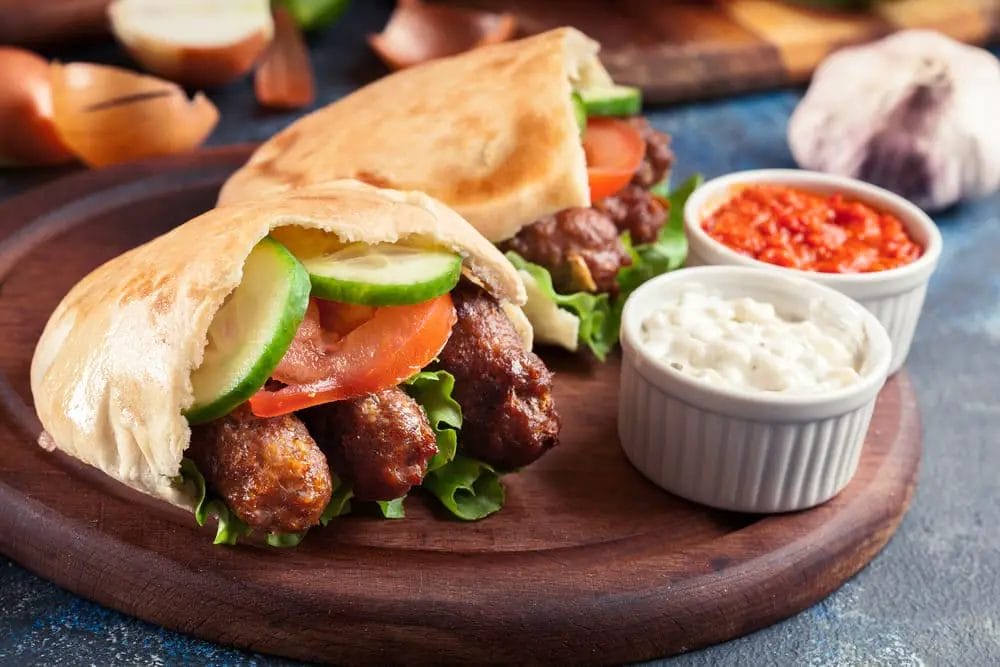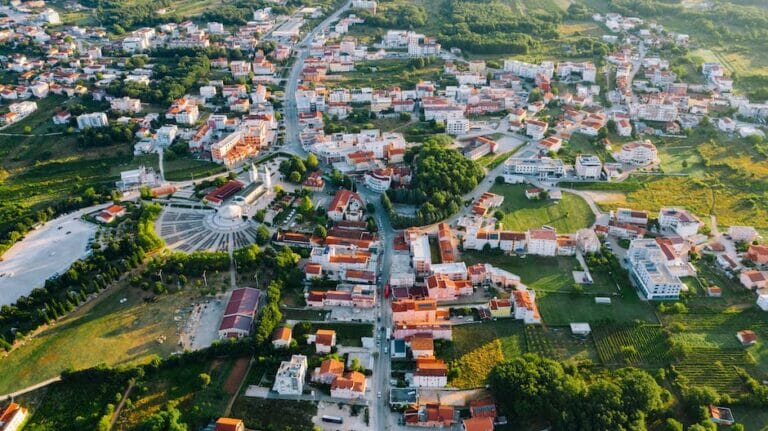National Dish of Bosnia: Everything You Should Know
If you are planning your trip to Bosnia and wondering what is the National Dish of Bosnia?
In this post, I will share with you all the details which you need and some other Bosnian Dishes which you could include in your Itinerary for Bosnia to try.
Bosnia is a country known for its rich and diverse cuisine, influenced by various cultures and traditions. From hearty stews to delectable pastries, Bosnian cuisine offers a wide range of flavors and textures that are sure to satisfy any palate. One dish that stands out among the rest as Bosnia’s national dish is cevapi.
National dishes hold great importance in defining a country’s cultural identity. They are often deeply rooted in tradition and passed down through generations, serving as a symbol of heritage and pride. Cevapi, with its unique blend of flavors and history, perfectly embodies the essence of Bosnian cuisine.
Let us dive in!
Key Takeaways
- Cevapi is the national dish of Bosnia and is a must-try for anyone visiting the country.
- Cevapi originated in the Balkans and is made with a blend of beef and lamb.
- Cevapi is typically served with onions, sour cream, and a type of flatbread called somun.
- There are regional variations of cevapi in Bosnia, with some areas using different spices or types of meat.
- While not the healthiest dish, cevapi does provide a good source of protein and can be made with vegetarian or vegan alternatives.
What is the National Dish of Bosnia?

The national dish of Bosnia is cevapi. Cevapi are small, grilled sausages made from a mixture of minced beef and lamb. They are typically served with pita bread, onions, and a side of sour cream. Cevapi is a popular and traditional dish in Bosnia and Herzegovina.
History and Origin of Cevapi
Cevapi has a fascinating history that dates back centuries ago. Its origins can be traced back to the Ottoman Empire when it was introduced to Bosnia during their rule in the region. The dish evolved over time as it adapted to local ingredients and cooking techniques.
Legend has it that cevapi was first created by Turkish soldiers who needed a quick yet nourishing meal during their military campaigns. They would skewer small pieces of meat onto swords or spears before grilling them over an open fire. This method allowed them to cook the meat quickly while preserving its tenderness.
Ingredients Used in Cevapi
Cevapi, also known as cevapcici, is a traditional Balkan dish made from grilled minced meat. The ingredients commonly used in cevapi include:
- Ground meat: Cevapi is traditionally made with a mixture of beef, lamb, and pork. However, you can use any combination of these meats based on your preference.
- Onion: Finely chopped onions are added to the ground meat mixture to enhance the flavor and moisture content.
- Garlic: Minced garlic adds a delicious savory taste to the cevapi.
- Salt and pepper: These seasonings are used to enhance the overall taste of the dish.
- Paprika: Paprika is a common spice used in cevapi to add a smoky and slightly spicy flavor.
- Baking soda: A small amount of baking soda is sometimes added to the mixture to help tenderize the meat.
These ingredients are mixed together to form a well-combined mixture, which is then shaped into small sausage-like portions. The cevapi are typically grilled until they are cooked through and have a slightly charred exterior. Cevapi are often served with flatbread, onions, and a variety of condiments such as ajvar (red pepper relish) and kajmak (creamy dairy spread).
Preparation and Cooking Methods
Cevapi is a traditional Balkan dish made of grilled minced meat, typically beef, lamb, or a combination of both. It is commonly served with flatbread (somun) and usually accompanied by chopped onions, ajvar (a type of red pepper relish), and sour cream. Here are the preparation and cooking methods for cevapi:
- Ingredients:
- Minced meat (beef, lamb, or a combination)
- Salt
- Pepper
- Optional spices (such as paprika, garlic powder, or onion powder)
- Preparation:
- In a bowl, combine the minced meat with salt, pepper, and any optional spices you prefer. Mix well to evenly distribute the seasoning.
- Let the mixture rest in the refrigerator for at least 1 hour to allow the flavors to meld together.
- Shaping the cevapi:
- Take a small portion of the meat mixture and shape it into small cylindrical sausages, about 2-3 inches long and 1/2 inch thick. Repeat until all the meat mixture is used.
- Cooking methods:
- Grilling: Preheat the grill to medium-high heat. Place the cevapi on the grill grates and cook for about 4-6 minutes per side, or until they are browned and cooked through.
- Pan-frying: Heat a skillet or frying pan over medium heat. Add a small amount of oil or butter to the pan. Place the cevapi in the pan and cook for about 4-6 minutes per side, or until they are browned and cooked through.
- Oven-baking: Preheat the oven to 400°F (200°C). Place the cevapi on a baking sheet lined with parchment paper. Bake for about 15-20 minutes, or until they are browned and cooked through.
- Serving:
- Serve cevapi hot with flatbread (somun) or pita bread.
- Accompany with chopped onions, ajvar, and sour cream as desired.
- You can also serve cevapi with a side salad or roasted vegetables.
Serving and Presentation of Cevapi
The presentation of cevapi plays an important role in enhancing its overall appeal and enjoyment factor. When serving this national dish, attention should be given not only to taste but also aesthetics.
Cevapi are typically arranged neatly on a plate or platter before being garnished with fresh herbs such as parsley or dill for added color contrast against their rich brown exterior. Some may choose to sprinkle paprika over them for an extra burst of flavor and visual appeal.
Accompaniments and sides are also crucial in completing the cevapi experience. Traditional Bosnian side dishes such as krompiruša (potato pie), shopska salad (a refreshing mix of tomatoes, cucumbers, onions, and feta cheese), or urnebes salad (spicy cheese spread) are often served alongside cevapi to create a well-rounded meal.
Regional Variations of Cevapi in Bosnia
Bosnia is a country with diverse regional cuisines, each offering its own unique twist on the classic dish. While the basic recipe for cevapi remains consistent throughout the country, there are subtle variations that reflect regional preferences and traditions.
In Sarajevo, for example, cevapi are typically smaller in size compared to other regions. They are often served with somun bread that has been brushed with butter and grilled to perfection. In Banja Luka, on the other hand, larger-sized cevapi can be found along with a wider variety of condiments such as sour cream or pickles.
Cultural Significance of Cevapi in Bosnia
Cevapi holds immense cultural significance in Bosnia and plays an integral role in various cultural traditions and celebrations. It is commonly served during festive occasions such as weddings or religious holidays like Eid al-Fitr.
The act of preparing cevapi itself is seen as a communal activity that brings families together. It is not uncommon to see multiple generations working side by side to shape the meat mixture into sausages before they hit the grill or pan.
Furthermore, sharing a plate of cevapi has become synonymous with hospitality in Bosnian culture. It is customary for hosts to serve their guests this beloved dish as a gesture of warmth and friendship.
Cevapi in Modern Times: Popular Street Food and Restaurant Dish
In recent years, cevapi has gained popularity not only within Bosnia but also internationally. It has become a staple street food in many cities around the world, with food trucks and stalls offering their own unique take on this Bosnian delicacy.
Restaurants specializing in Balkan cuisine have also embraced cevapi as a star dish on their menus. Chefs are constantly experimenting with new flavors and presentations to cater to the evolving tastes of diners.
Health Benefits and Nutritional Value of Cevapi
While cevapi is undoubtedly delicious, it is important to consider its nutritional value and health benefits as well. The dish provides a good source of protein due to its meat content, which is essential for muscle growth and repair.
However, it is worth noting that cevapi can be high in fat content depending on the type of meat used. To make it healthier, leaner cuts of meat can be chosen or mixed with other ingredients such as vegetables or legumes for added fiber and nutrients.
Vegetarian and Vegan Alternatives to Cevapi
For those who follow vegetarian or vegan diets, there are alternatives available that capture the essence of cevapi without using meat products. One popular option is made from textured vegetable protein (TVP) or seitan mixed with various spices to mimic the flavor profile of traditional cevap.
Additionally, Bosnia offers a wide range of vegetarian dishes that showcase the country’s culinary creativity without compromising taste or cultural significance. Dishes such as burek (a savory pastry filled with cheese or spinach) or grah (a hearty bean stew) are just some examples that vegetarians can enjoy while exploring Bosnian cuisine.
Other Bosnian Dishes to Try
1. Burek
Burek is a traditional Bosnian pastry that is often enjoyed as a breakfast or snack. It consists of thin layers of phyllo dough filled with various ingredients such as meat, cheese, spinach, or potatoes. The layers are stacked on top of each other and baked until golden and crispy. Burek is known for its flaky texture and rich flavor, making it a must-try dish when visiting Bosnia.
2. Bosanski Lonac
Bosanski Lonac, also known as Bosnian Pot, is a hearty stew that originated in Bosnia. It is made by layering different types of meat, such as beef, lamb, and chicken, along with vegetables like potatoes, carrots, and onions in a large pot. The ingredients are then slow-cooked together with a blend of spices until tender and flavorful. Bosanski Lonac is a comforting and filling dish that showcases the diverse flavors of Bosnian cuisine.
3. Klepe
Klepe are Bosnian dumplings that are similar to Italian tortellini or Chinese jiaozi. They are made by wrapping small circles of dough around a filling of minced meat, typically beef or lamb, and then boiled until cooked. Klepe are often served in a flavorful broth or topped with melted butter and sprinkled with grated cheese. These bite-sized dumplings are a delicious and comforting dish that is popular throughout Bosnia.
4. Sogan-dolma
Sogan-dolma is a traditional Bosnian dish made from stuffed onions. Large onions are hollowed out and filled with a mixture of ground meat, rice, and spices. The stuffed onions are then simmered in a flavorful broth until tender and the flavors are well-infused. Sogan-dolma is a unique and flavorful dish that is often served as a main course accompanied by yogurt or sour cream.
These are just some of the many delicious Bosnian dishes to try along with Cevapi. Each dish offers a unique blend of flavors and ingredients that reflect the rich culinary heritage of Bosnia.
Why Bosnian National Food Cevapi is a Must-Try Dish in Bosnia
In conclusion, cevapi stands out as an iconic national dish in Bosnia due to its rich history, cultural significance, and mouthwatering flavors. Its evolution over time reflects the country’s diverse culinary heritage and the adaptability of its people.
Whether you are a meat lover or follow a vegetarian diet, cevapi offers something for everyone. Its versatility and ability to be enjoyed in various settings make it an essential dish to try when visiting Bosnia. S
o, next time you find yourself in this beautiful country, don’t miss out on the opportunity to savor this beloved Bosnian delicacy and experience the warmth of Bosnian hospitality firsthand.
If you are planning your Journey to Bosnia you can head out to our resources for Bosnia to plan your adventure.
FAQs
What is the national dish of Bosnia?
The national dish of Bosnia is cevapi, which is a grilled dish made of minced meat (usually beef or lamb) served with onions, sour cream, and a type of flatbread called somun.
What is somun?
Somun is a type of flatbread that is commonly eaten in Bosnia. It is similar to pita bread, but is thicker and softer.
What is the history of cevapi?
Cevapi is believed to have originated in the Balkans, and is a popular dish in Bosnia, Serbia, Croatia, and other countries in the region. It is thought to have been brought to Bosnia by the Ottoman Turks during their rule in the 15th and 16th centuries.
What are some other traditional Bosnian dishes?
Some other traditional Bosnian dishes include burek (a type of savory pastry filled with meat, cheese, or vegetables), dolma (stuffed grape leaves), and sarma (stuffed cabbage rolls).
What is the cuisine of Bosnia influenced by?
The cuisine of Bosnia is influenced by a variety of cultures, including Ottoman, Austro-Hungarian, and Mediterranean. This has resulted in a diverse range of dishes and flavors.
What are some common ingredients used in Bosnian cuisine?
Common ingredients used in Bosnian cuisine include meat (especially beef and lamb), vegetables (such as peppers, onions, and tomatoes), dairy products (such as cheese and yogurt), and spices (such as paprika and cumin).



